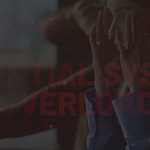Work Used to Be Toil: Work used to be about making everything super predictable. How many of this one thing can we pump out repeatedly that look exactly the same. Today’s work has automated a great deal of that and AI threatens (currently with a modicum of credibility) to automate even more.
We are at a Flex Point: Now things are more inventive, the rate of change is faster, the types of change more pronounced. This is not a death sentence, it is a point of change. AI certainly isn’t ready for prime time, despite the hype, but it will get there and we will adjust.
Work will become more distributed. We will be individuals, in teams, creating value, but the teams will become more spread out. People at home, in other cities or countries, and we’ll need to communicate much better than we have in the past (The “good news”: we were always pretty bad at communicating, so we have only upwards to go).
“There is no point trying to impose certainty on a situation which contains high uncertainty.” ~ Goldratt
Replace Problems with Opportunities. As we work now solo business and creative work, we will need to improve how we improve. In the past , we spent a lot of time talking about problems. We examined how to fix them, how to avoid them, how to survive them. But the real story of the future of work, and of meaningful, humane work, is about opportunity: how do we set ourselves up to spot, seize, and shape the opportunities that matter most to us? How do we take a problem or found complexity and turn it into something we can (personally and as our team) and make it not an interruption (problem) but part of daily work done better than yesterday (opportunity).
This video explores how to keep your direction clear, your routines resilient, and your learning visible. Especially when the world around you is full of surprises which it is every day. The post here summarizes the video and extends it.
What’s in the Video: True North, Goals, and Standard Work in a World of Surprises
Hell is other people. ~ J.P. Sartre
So is heaven. ~ Jim Benson
The more distributed we are, the more overhead we have. You can’t call IT and tell them to replace your printer, that’s on you. You can’t have finance handle taxes, it’s also on you. If you need some training, again…you.
Believe it or not, there was a reason we worked together in the same building and there are some pretty compelling reasons to continue to do so. That’s for a different post. Here, we are talking about how to get clarity, drive completion, and enjoy the daily work when you are distributed, a solopreneur, or otherwise “on your own.”
Your True North is Who You Want to Be
Before you chase opportunities, ask: Who do I want to be?
True North isn’t a task list or a job title or a platitude. Your True North defines who and what you want you and your product to be. This guides every decision, big or small.
In practice, most people think they know their True North, but when pressed, struggle to articulate it. It takes real reflection and conversation.
Put your True North where you can see it. Make it a visual reminder when overload tries to make you focus on short term gains that will hurt your real aspirations.
2. Define Your Goals
Your goals are the outcomes that flow from your True North.
Whether you’re working solo or with a team, it’s easy to assume you know what you want. Until you try to write your goals down and really look at them, you will not “have goals”.
Goals can be for today, this week, this month. They are a reason to invest your time in one activity over another. They must be intentional.
Real clarity about goals comes from dialogue, not just internal monologue.
3. Build Your Standard Work
Standard work is your best-known way to move toward your goals through the work you do every day. It’s a current, temporary, improvable routine that makes the unpredictable manageable.
For example, my standard work for creating videos (currently) is:
Generating ideas
Sketching visuals
Talking through the concept
Shooting and editing
Publishing and promoting
Engaging with the community
Within this standard work there are editing techniques that are standard, tools that are standard, ways I generate and store ideas, etc. I change them daily.
This routine evolves over time, adapting to new tools, lessons learned, and the inevitable weirdness of daily life.
If you don’t regularly improve your standard work, you have an increasingly ineffective rut.
4. Embrace Variation
No matter how well you plan, variation is unavoidable. This doesn’t mean it should not be controlled, but it means that, now, we live in a world where change is more pronounced, more likely, and requires more reaction on our parts.
Variation might be mundane (Tech fails, clients panic, family needs arise, and inspiration striking at odd hours). Our success lies in our ability to deal with these things elegantly.
The trick isn’t to eliminate variation, but to build routines and systems that absorb it, so you can keep moving toward your True North through achieving goals and learning and improving even when the unexpected happens.
Extending the Practice
Making True North Tangible
Keep it visible: Write your True North statement at the top of your board or workspace. Review it weekly. Make it the background on your monitor. Tape it to the dog.
Make it collaborative: Don’t just define it alone. Discuss it with customers, friends, peers, mentors, or your community. Shared language builds shared direction. Hear yourself talking about it with others.
Setting and Reviewing Goals
Limit your focus: Choose 2-3 weekly goals that align with your True North. Don’t overload your plate. But track them, see how you are making progress. Opportunities that you convert into completed goals are the very definition of success.
Check in often: With each ticket ask: Are my actions moving me closer to these goals? If not, adjust the goals, adjust your tactics, look for options. Don’t just push harder.
Evolving Standard Work
Document your routine: Write out your standard process for key actions. (Mine are content creation, sales, and working with students / clients). Update them as you learn.
Build in learning: After each ticket, reflect: What worked? What didn’t? What will I change next time? (Check out the video on the afterburner for how to make learning continuous).
Capture solutions: When you solve a recurring problem (like a tech glitch), record the fix—build your own FAQ.
Dealing with Variation and Interruptions
Expect the unexpected: Design your day with buffer space for surprises. Don’t schedule yourself to the brim.
Visualize interruptions: Track major disruptions on your Personal Kanban. Over time, you’ll spot patterns and can build better defenses.
Practice self-compassion: When things go sideways, remember: variation is normal. The goal isn’t perfection, but steady progress.
Building a Resilient Workflow
Choose tools that serve you: Use platforms and apps that fit your workflow, not the other way around. If a tool causes more pain than progress, it’s time to switch. Also remember, every tool is flawed, some are useful. Be neither beholden to your tools or switch so often that you build no standard work.
Connect with community: Share your struggles and solutions. Someone else has faced your challenge before and sharing builds collective wisdom. If you work with tools often, find their user groups on Facebook or LinkedIn and leverage them.
Opportunity Overload and Humane Work
The real challenge here is opportunity overload. When you have no standard work then everything is changing or a surprise. You are reinventing the obvious. This means your attention is split by surprises you could have avoided and you risk missing the benefits of real surprises and opportunities.
By making your direction, your goals, and your routines visible, you create the space to notice, seize, and shape opportunities, even when they come in frustrating or stressful packages.
If you want to go deeper, explore Modus Institute’s courses on Personal Kanban, Cleaning Toxic Waste, and the x-matrix (on setting your strategy). Upcoming workshops in summer 2025 are: Personal Kanban Evolved and the True North Workshop
And as always, keep making your work visible. When you can see it, you can shape it.











Share this post